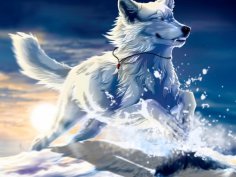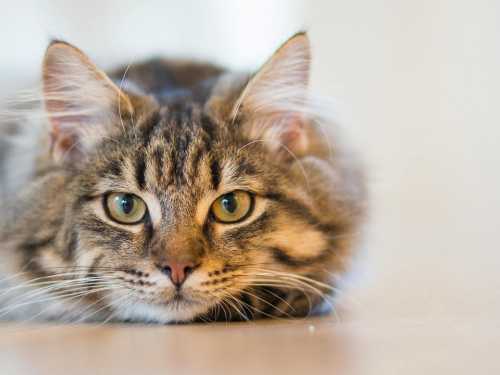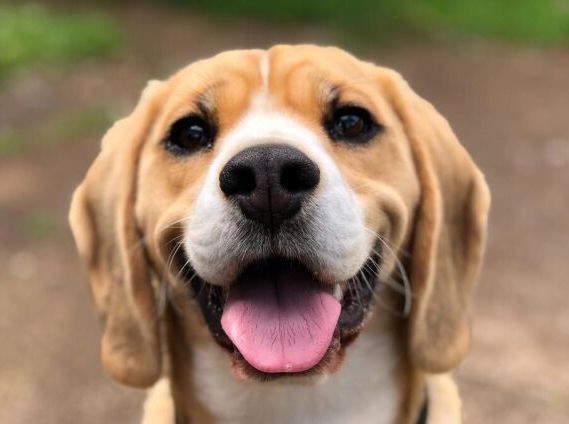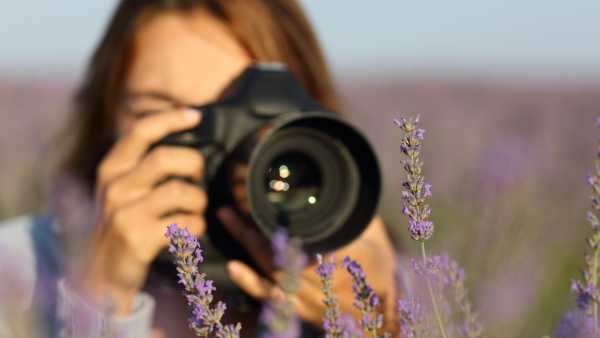
Like Soviet citizens, man's four-legged friends endured all the “delights” of the regime of the time, along with the country itself. They, too, were subjected to repression, expelled abroad, tormented by starvation, and used as cannon fodder during the war.
Few people know that in 1927, perhaps the most absurd decree of the Soviet government was issued. It strictly prohibited citizens from keeping decorative breeds of dogs at home.
In fact, quite a few dog breeds were exterminated during the Revolution. Greyhounds, considered a symbol of nobility, were among the first to suffer. Apparently, genetic memory was at work: to wipe out all aspects of the rich's way of life, greyhounds burned along with their owners' estates.
At the same time, small toy dogs appeared on the city streets, homeless. The proletarians didn't tolerate their presence. As a result, the dogs were considered petty bourgeois, and it was decided to get rid of them. As a result, by 1945, there wasn't a single representative of such a bourgeois breed as, for example, the French Bulldog in Russia.
The famous actress Lyubov Orlova, in a childless marriage, took a pug into her home. And, as often happens, the pug became a child for her. Although those close to her were well aware of its existence, everyone pretended to be unaware that a toy dog had become a permanent fixture in her apartment. And Orlova herself, a favorite of Stalin, kept the pug's presence in her life under wraps.
Nevertheless, decorative breeds from Europe still secretly made their way into the Soviet Union. For example, the ballerina Galina Ulanova received a dog of a banned breed from the Queen of England herself. The poodle was named Big Bar.
In fact, some cynologists specializing in poodles consider this breed the pinnacle of evolution—the smartest and most beautiful dogs, whose owners are always intelligent and pleasant in every way. Plisetskaya and the Magomayev-Sinyavsky couple had poodles. Putin also had a beautiful white poodle.
But it is unlikely that they all know that the distant ancestor of their dogs was Galina Ulanova's Big Bar, whose reproductive function was exploited, without giving the poor thing a week's rest.
A canine “thaw” began after the war. Owners of large and even small dogs no longer felt ashamed of their own bourgeois status. Even the authorities themselves took a different view of man's four-legged friends. This was likely due to the significant role dogs played during the war.
The first dog show was held in Moscow in 1936. Bloodhounds and guard dogs proudly paraded around the circle. However, there were no small toy dogs at the show.
Soon, service dog clubs began opening across the country. Their main focus was military training. Some of these dogs later blew up tanks and saved people from mines during the war.
Another furry friend saved his owner during the war—the future actor Georgy Yumatov. Yumatov, who was serving as a cabin boy on an armored boat at the time, once brought a puppy aboard. For this, he received two days in the guardhouse, but he never parted with the dog. Then one day, when German planes bombed the boats, the puppy, frightened by the explosions, jumped overboard. Yumatov jumped in after him to save the animal. At that moment, a shell struck the boat directly. Everyone died except Yumatov, who accidentally fell overboard.
Yumatov always had a large number of dogs around him, and he even brought some of them home. And it must be said that the dogs saved their owner more than once: on a hunt, by exposing their side to the tusks of a boar, on the street, by throwing themselves under the wheels of a drunk driver, and so on.
This all-Union handsome man was married to the little-known actress Muza Krepkogorskaya. Many wondered why he didn't choose a wife as dazzling as himself. The answer was simple: Muza loved dogs just as much.
But his last dog, Frosya—the family's favorite—played a fateful role in the actor's life. When she died, Yumatov took her into the yard to bury her and asked the janitor to help him dig out the frozen ground. Afterward, they went up to the house to remember Frosya. No one knows what happened. But Yumatov shot the janitor. Why and for what reason, no one ever understood…
The first German Shepherds appeared in Moscow in 1945. They were considered trophies of the victors. However, the word “German” evoked negative associations after the war. Therefore, the breed was renamed Eastern European in the USSR. They were bred at the “Red Star” kennel, where, at the time, sometimes wild crossbreeding experiments were conducted to develop new Soviet breeds.
For example, Stalin's dog was bred at this kennel. Cynologists were commissioned by Stalin to develop a special guard dog with a thick coat, long legs, and powerful teeth. The result was a new breed of black terrier, known as Stalin's dog. It was intended primarily for Stalin's prison camps. Obtaining a specimen of this breed was considered the height of luck in those days.
The Soviet authorities controlled the trade in puppies of this breed. Breeding or selling dogs without the knowledge of the kennel club was considered illegal business activity, i.e., speculation. Many underground dog breeders ended up in prison during the era of stagnation.
Dreaming of a Black Terrier, Soviet citizens didn't fully understand the purpose of Stalin's dog's breeding. They didn't understand that they were bringing into their homes a creature with cannibalistic tendencies. Therefore, seeing the breed “step out” of the Gulag and into the public eye, breeders softened its character somewhat.
In Soviet times, feeding a pet, especially a large one, was not easy. Dry food was unavailable in the USSR, and bony meat was subject to long lines.
When buying a dog, people didn't consider that a four-legged friend would become a financial burden for the entire family. And in difficult times, for example, during the years of monetary reforms, dogs were thrown out onto the streets, instantly replacing love and compassion with cruelty and indifference. There were no laws punishing this in the USSR. And there still aren't any.
People also bought dogs under the influence of popular films. In the 1980s, everyone was fascinated by Lassie, so people lined up to buy Scottish Shepherds. The film “Friend” infected the capital with a passion for Newfoundlands, and “Come, Mukhtar” infected the city with a passion for German Shepherds.
In the 1960s, small terriers became incredibly popular in the capital, although in the 1950s they were still considered exotic. Their owners were primarily members of Moscow's elite. In 1955, while on tour, Klavdiya Shulzhenko was given a Skye Terrier. The singer fell in love with the dog. She bought fresh veal for it at the market, pampered it, and on non-concert days, she personally took her little Kuzya for walks in the evenings. The dog became her family, the closest thing she had to a life after two failed marriages and one common-law marriage.
Shulzhenko never canceled a concert in her life. She even sang, risking her life, during the siege of Leningrad. But when her beloved Kuzya was hit by a car due to the carelessness of a costume designer, she canceled the concert, only vaguely telling the organizers something about Kuzya. A few days later, a scathing article appeared in the newspaper Trud, titled “Tuzik Fainted.” The author of the scathing article accuses the People's Artist of being less important to her than some little tuzyk, the people who so eagerly await her concerts.
After reading the article, Klavdiya Ivanovna decided she would never perform on stage again, since the cruel public couldn't understand that the death of a dog was the loss of a loved one. Her boycott lasted a year, and she only returned to the stage thanks to the persuasion of close friends.
Interestingly, many years later the author of the feuilleton found Shulzhenko and apologized, saying that only now did he understand her feelings, when his dog also died.
Another great actress, Faina Ranevskaya, lived in the apartment next to Shulzhenko. For her, the center of her universe was Malchik—her dog. She was terrified that after her death, Malchik would end up homeless, and so she asked everyone she knew to take care of him after her death. A small cast-iron dog rests on Ranevskaya's tombstone. This was created by those who knew well how much the mongrel Malchik had done for the lonely actress, how much warmth and love he had given her.
How many dogs have helped both celebrities and ordinary people cope with loneliness. And this is perhaps the greatest achievement of man's four-legged friends.
The more I know people, the more I love dogs… This phrase is attributed to at least six authors. But how true it is!





